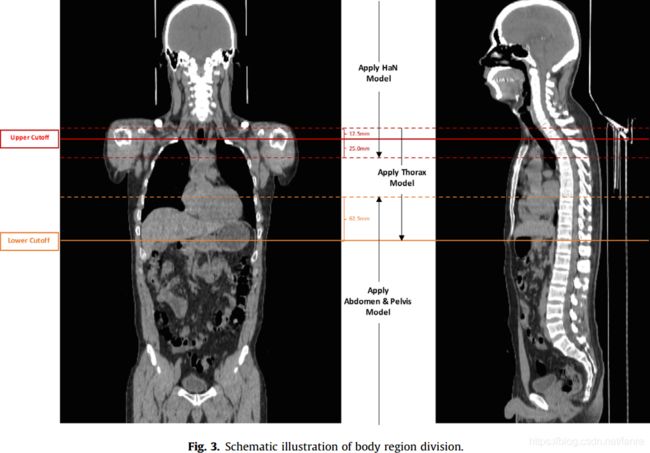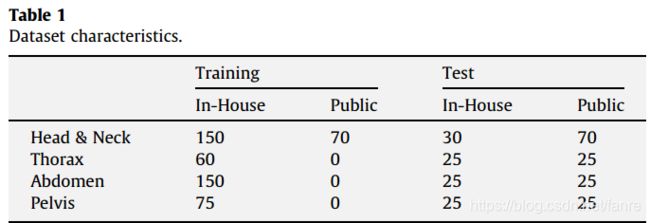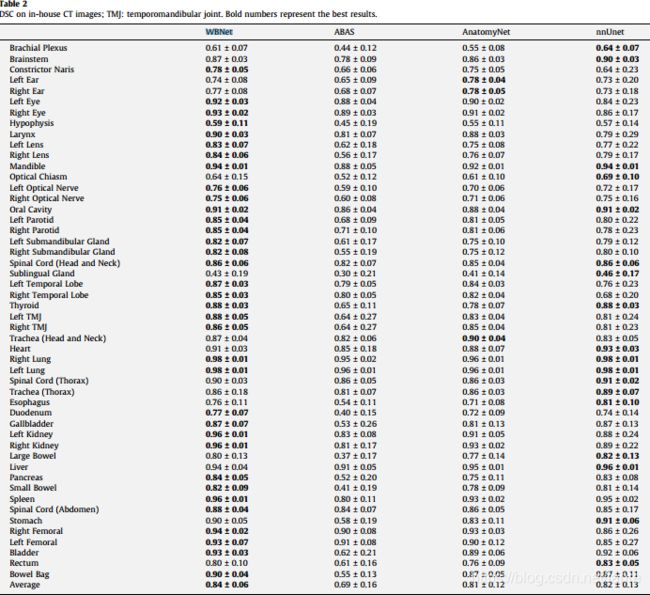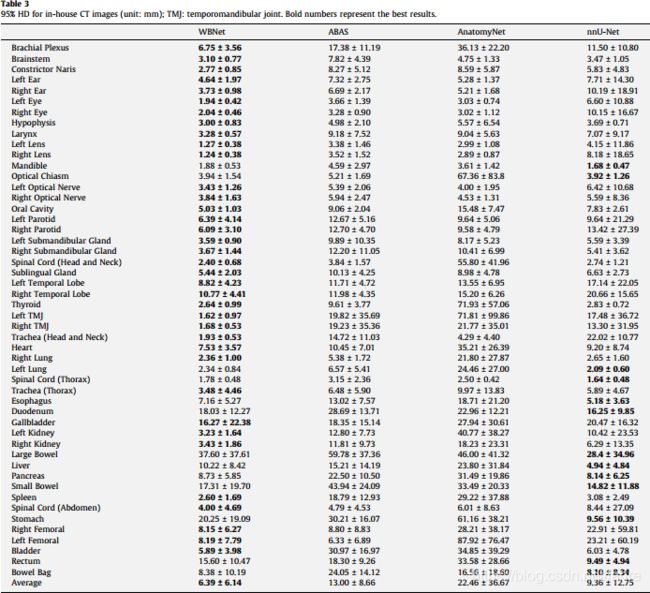- bash方式启动模型训练
BILLY BILLY
深度学习基础开发必备工具自动驾驶
export\PATHPYTHONPATH=/workspace/mmlab/mmdetection/:/workspace/mmlab/mmsegmentation/:/workspace/mmlab/mmdeploy/:${env:PYTHONPATH}\CUDA_VISIBLE_DEVICES=0\DATA_ROOT_1=/mnt/data/…/\DATA_ROOT_2=/mnt/data/
- ISBI 2023部分半监督学习论文汇总
xiongxyowo
划水
ISBI2023论文集:https://ieeexplore.ieee.org/xpl/conhome/10230311/proceeding[link]LeveragingInter-AnnotatorDisagreementforSemi-SupervisedSegmentation生物医学图像的信噪比通常较低,这往往导致专家们对GT分割存在分歧。现有的多重标注方法试图解决相互冲突的标注,而我
- CVPR2024无监督Unsupervised论文17篇速览
木木阳
CVPR无监督unsupervised
Paper1GuidedSlotAttentionforUnsupervisedVideoObjectSegmentation摘要小结:这段话的中文翻译如下:无监督视频对象分割旨在分割视频序列中最突出的对象。然而,复杂的背景和多个前景对象的存在使这项任务变得具有挑战性。为了解决这一问题,我们提出了一种引导式槽注意力网络,以加强空间结构信息并获得更好的前景-背景分离。初始化时带有查询引导的前景和背景
- CVPR2024 分割Segmentation相关论文37篇速览
木木阳
CVPR2024Segmentation分割论文
Paper1MFP:MakingFullUseofProbabilityMapsforInteractiveImageSegmentation摘要小结:最近的交互式分割算法中,将先前的概率图作为网络输入,以帮助当前分割轮次的预测。然而,尽管使用了先前的掩膜,概率图中包含的有用信息并没有很好地传播到当前预测中。在本文中,为了克服这一局限性,我们提出了一种新颖有效的基于点击的交互式图像分割算法MFP,
- ✨【CosyVoice2-0.5B 实战】Segmentation fault (core dumped) 终极解决方案 (保姆级教程)
杨靳言先
语音识别语音生成python人工智能
【CosyVoice2-0.5B实战】Segmentationfault(coredumped)终极解决方案|torchaudio.save崩溃全流程排查与替代方案(保姆级教程)“运行没报错就是胜利,结果没崩溃就是奇迹。”——每一位搞TTS的开发者内心独白本文聚焦使用CosyVoice2-0.5B进行TTS推理过程中,常见的torchaudio.save()崩溃问题——Segmentationfa
- 深度学习计算机视觉开源系统OpenMMLab(mmsegmentation、mmdetection、mmpose)环境配置【详细、可运行】
nomoremorphine
深度学习计算机视觉开源
OpenMMLab(mmsegmentation、mmdetection、mmpose)环境配置OpenMMLab简介优势:一、Windows/Linux下环境配置(以mmsegmentationv1.2.2(最新版)为例)0.确认安装版本信息1)确认电脑显卡版本2)确认mmcv对应版本3)确认版本1.安装CUDA和cuDNN2.创建conda环境,下载pytorch3.安装mmcv4.安装MMS
- [CVPR 2025] 高效无监督Prompt与偏好对齐驱动的半监督医学分割
alfred_torres
prompt医学图像分割
CVPR2025|优化SAM:高效无监督Prompt与偏好对齐驱动的半监督医学分割论文信息标题:EnhancingSAMwithEfficientPromptingandPreferenceOptimizationforSemi-supervisedMedicalImageSegmentation作者:AishikKonwer,ZhijianYang,ErhanBas,CaoXiao,Pratee
- SAM分割一切系列相关论文梳理
↣life♚
计算机视觉通用模型大模型深度学习计算机视觉通用分割transformerSAM自动标注
文章目录SAM相关论文SAM优化或功能拓展[MedicalImageAnalysis2025]UN-SAM:Domain-AdaptiveSelf-PromptSegmentationforUniversalNucleiImages-通过自动生成掩码prompt减轻标注工作,实现细胞通用分割[NIPS2023]SegmentEverythingEverywhereAllatOnce-比SAM交互能
- 多模态大语言模型arxiv论文略读(127)
胖头鱼爱算法
#mllm_arxiv语言模型人工智能自然语言处理论文笔记论文阅读
WhenSAM2MeetsVideoCamouflagedObjectSegmentation:AComprehensiveEvaluationandAdaptation➡️论文标题:WhenSAM2MeetsVideoCamouflagedObjectSegmentation:AComprehensiveEvaluationandAdaptation➡️论文作者:YuliZhou,GuoleiS
- 医图论文 AAAI‘25 | VOILA: 基于体素与语言交互的复杂度感知CT图像通用分割方法
小白学视觉
医学图像处理论文解读人工智能计算机视觉医学图像处理论文解读深度学习AAAI
论文信息题目:VOILA:Complexity-AwareUniversalSegmentationofCTimagesbyVoxelInteractingwithLanguageVOILA:基于体素与语言交互的复杂度感知CT图像通用分割方法作者:ZishuoWan,YuGao,WanyuanPang,DaweiDing论文创新点引入体素级对比学习:本文首次将体素级对比学习引入医学图像分割任务。通
- [论文阅读]PIDNet: A Real-time Semantic Segmentation Network Inspired by PID Controllers
颜笑晏晏
论文阅读
1.摘要双分支网络结构已显示出其对实时语义分割任务的效率性和有效性。然而,低级细节和高级语义的直接融合将导致细节特征容易被周围上下文信息淹没,即本文中的超调(overshoot),这限制了现有两个分支模型的准确性的提高。在本文中,我们在卷积神经网络(CNN)和比例积分微分(PID)控制器之间架起了桥梁,并揭示了双分支网络只是一个比例积分(PI)控制器,当然也会存在类似的超调问题。为了解决这个问题,
- 医图论文 Arxiv‘24 | SEG-SAM:用于统一医学图像分割的语义引导SAM
小白学视觉
医学图像处理论文解读医学图像处理医学图像顶会Arxiv论文解读深度学习
论文信息题目:SEG-SAM:Semantic-GuidedSAMforUnifiedMedicalImageSegmentationSEG-SAM:用于统一医学图像分割的语义引导SAM作者:ShuangpingHuang,HaoLiang,QingfengWang,ChulongZhong,ZijianZhou,MiaojingShi论文创新点语义感知解码器:作者提出了一个独立的语义感知解码器(
- 2022-2023 ICCV、ECCV、CVPR关于有感自动驾驶的论文
木寒夏
自动驾驶人工智能机器学习
2022-2023ICCV、ECCV、CVPR关于有感自动驾驶的论文1全景分割【ECCV2022】|4D-STOP:基于时空对象方案生成和聚合的4DLiDAR全景分割|4D-StOP:PanopticSegmentationof4DLiDARUsingSpatio-TemporalObjectProposalGenerationandAggregation|论文链接|代码链接【ECCV2022】|
- In PyTorch 2.6, we changed the default value of the weights_only argument in torch.
神笔馬良
pytorch人工智能python
问题描述:D:\anaconda\envs\yolov5_mogui\python.exeD:/Instance_Segmentation/yolov5_moguimianju/yolov5-seg-master/train.pytrain:weights=weights\yolov5s-seg.pt,cfg=models/yolov5s-seg.yaml,data=data\dc.yaml,hy
- C语言中的段错误(Segmentation Fault):底层原理及解决方法
woainizhongguo.
C/C++c语言开发语言
在嵌入式单片机开发中,除了段错误外,还有许多其他常见的运行时错误,这些错误可能导致系统崩溃、功能异常或性能下降。以下是分类介绍及应对方法:一、硬件相关错误1.外设初始化失败原因:时钟未使能(如STM32未调用__HAL_RCC_GPIOx_CLK_ENABLE())。引脚复用配置错误(如将USART_TX引脚配置为普通GPIO)。外设参数超出范围(如I2C速率设置过高)。表现:外设无响应,如串口无
- nnUNet V2代码——图像增强(一)
w1ndfly
图像增强阅读nnUNetV2代码计算机视觉机器学习深度学习人工智能nnunetnnU-NetV2nnUNet
本文目录nnUNetV2使用的图像增强方法各个图像增强代码1.BasicTransform2.SpatialTransform__init__函数get_parameters函数_apply_to_image函数_apply_to_segmentation函数其余函数nnUNetV2使用的图像增强方法nnUNetV2会依照概率依次对图像应用以下图像增强方法:代码-类名对应图像增强方法Spatial
- 探索大规模实例分割新天地 —— LVIS API深度解析与应用推广
芮奕滢Kirby
探索大规模实例分割新天地——LVISAPI深度解析与应用推广去发现同类优质开源项目:https://gitcode.com/在机器视觉领域,数据集的丰富性和多样性是推动技术进步的关键。LVIS(LargeVocabularyInstanceSegmentation),以其独特的名字和深远的意义,在实例分割界掀起了一场革新风暴。LVIS,这个名字发音为“el-vis”,不仅仅是一个数据集,更是一套强
- 跨视角差异-依赖网络用于体积医学图像分割|文献速递-生成式模型与transformer在医学影像中的应用
Title题目Cross-viewdiscrepancy-dependencynetworkforvolumetricmedicalimagesegmentation跨视角差异-依赖网络用于体积医学图像分割01文献速递介绍医学图像分割旨在从原始图像中分离出受试者的解剖结构(例如器官和肿瘤),并为每个像素分配语义类别,这在许多临床应用中起着至关重要的作用,如器官建模、疾病诊断和治疗规划(Shamsh
- 七天速成数字图像处理之五(图像分割)
ZzzZ31415926
图像处理计算机视觉算法人工智能数学建模
图像分割(ImageSegmentation)是数字图像处理中最核心、最具挑战性的任务之一,其目标是将图像划分为具有一致特征的区域,从而实现对图像中目标或结构的提取、理解与分析。下面我将从概念、分类、经典方法、实际应用四个层面为你系统性地讲解图像分割。一、什么是图像分割?定义:图像分割是指将图像划分为若干个互不重叠的区域,使得每个区域内部具有某种一致性(如灰度、纹理、颜色、边缘等),而不同区域之间
- 配置acados时出现“Segmentation fault,Exception: Rendering of main.in.c failed!”报错
Nice_Tea
数学建模开发语言ubuntuc++
问题描述在安装acados后运行测试节点时出现错误:liangjunming@XX~/program/acados/examples/acados_python/getting_startedongit:mastero[11:49:11]C:1$python3.8minimal_example_ocp.pyWARNING:Gauss-NewtonHessianapproximationwithEX
- 鸿蒙主体分割/剔除背景
xyccstudio
鸿蒙harmonyos华为
鸿蒙主体分割/剔除背景参考文档鸿蒙原生提供用于实现主体分割/剔除背景的API,有一些场景例如说证件照之类的应用就非常好做了。话不多话上代码。privateasyncdoSeg(chooseImage:PixelMap){letvisionInfo:subjectSegmentation.VisionInfo={pixelMap:chooseImage,};letconfig:subjectSegm
- 深度学习在建筑物提取中的应用综述
一瞬祈望
数据集深度学习人工智能
深度学习在建筑物提取中的应用综述目录深度学习在建筑物提取中的应用综述@[toc](目录)深度学习在建筑物提取中的应用综述一、建筑物提取简介二、深度学习方法分类1.语义分割(SemanticSegmentation)2.实例分割(InstanceSegmentation)3.边界感知分割(Boundary-awareSegmentation)4.多模态融合方法三、主流建筑物提取公开数据集及分析四、数
- YOLOv11改进 | DWRSeg扩张式残差助力小目标检测
wei子
技术杂谈YOLO人工智能
YOLOv11改进|DWRSeg扩张式残差助力小目标检测引言在目标检测领域,小目标检测一直是一个具有挑战性的任务。传统的卷积神经网络在处理小目标时往往表现不佳,主要是因为小目标在特征图中占据的像素较少,随着网络深度的增加,其特征信息容易丢失。本文提出的DWRSeg(Dilated-WiseResidualSegmentation)模块通过扩张式残差结构,有效增强了网络对小目标的特征提取能力,显著提
- kali中使用subfinder的时候报错,重新安装的时候也报错的问题解决方法,以及搭建go环境。
第五十七次取消发送
kaligosubfinder渗透测试
使用subfinder的时候出现了这个错误:panic:runtimeerror:invalidmemoryaddressornilpointerdereference[signalSIGSEGV:segmentationviolationcode=0x1addr=0x10pc=0xd8fa75]goroutine57[running]:github.com/projectdiscovery/su
- 【前沿 热点 顶会】CVPR 2025和目标分类、检测、分割、重识别有关的论文
平安顺遂事事如意
顶刊顶会论文合集分类数据挖掘人工智能CVPR检测分割重识别
SegEarth-OV:TowardsTraining-FreeOpen-VocabularySegmentationforRemoteSensingImages遥感图像在农业、水资源、军事、救灾等领域发挥着不可替代的作用。像素级解释是遥感影像应用的一个关键方面;但是,一个普遍的限制仍然是需要大量的手动注释。为此,我们尝试将开放词汇语义分割(OVSS)引入遥感环境中。然而,由于遥感图像对低分辨率特
- E: Sub-process /usr/sbin/dpkg-preconfigure --apt || true received a segmentation fault.
rrr2
Ubuntu
解决apt-get安装中的E:Sub-process/usr/sbin/dpkg-preconfigure--apt||truereceivedasegmentationfault.E:Failurerunningscript/usr/sbin/dpkg-preconfigure--apt||trueE:Sub-process/usr/bin/dpkgreturnedanerrorcode(1)问
- Segmentation fault(段错误)
科学的发展-只不过是读大自然写的代码
搜索算法
Segmentationfault(段错误)是程序在运行时遇到的一种严重错误,通常发生在程序试图访问未分配给自己的内存区域,或者试图以不允许的方式访问内存时。这种错误会导致程序异常终止,并可能生成一个名为“coredump”的文件,用于后续的调试和分析。一、段错误的原因段错误的发生通常与以下几种情况有关:空指针解引用:指针未初始化,或者指针被设置为NULL,然后尝试解引用该指针。示例代码:int*
- php 段错误,总结段错误(Segmentation fault) (转)
巫升权
php段错误
段错误(Segmentationfault)原文出处:http://oss.lzu.edu.cn/blog/article.php?tid_700.html我只是把排版弄舒服一点,很好的文章,虽然说是初级篇,但帮助确实很大。1)往受到系统保护的内存地址写数据有些内存是内核占用的或者是其他程序正在使用,为了保证系统正常工作,所以会受到系统的保护,而不能任意访问.#includeintmain(){i
- linux 跟踪调试 -- 笔记
wishfly
linuxlinuxgnudebian
1Segmentationfault(coredumped)Segmentationfault(coredumped)_doodlesomething的博客-CSDN博客_coredumped用gdb查看core文件:下面我们可以在发生运行时信号引起的错误时发生coredump了.发生coredump之后,用gdb进行查看core文件的内容,以定位文件中引发coredump的行.gdb[execf
- ERDUnet: An Efficient Residual Double-codingUnet for Medical Image Segmentation
医学分割哇哇哇哇哇哇哇哇哇
机器学习人工智能
ERDUnet:一种用于医学图像分割的高效残差双编码单元摘要医学图像分割在临床诊断中有着广泛的应用,基于卷积神经网络的分割方法已经能够达到较高的准确率。然而,提取全局上下文特征仍然很困难,而且参数太大,无法临床应用。为此,我们提出了一种新的网络结构来改进传统的编码器-解码器网络模型,在保持分割精度的同时节省了参数。通过构造一个能够同时提取局部特征和全局连续性信息的编码器模块,提高了特征提取效率。设
- web报表工具FineReport常见的数据集报错错误代码和解释
老A不折腾
web报表finereport代码可视化工具
在使用finereport制作报表,若预览发生错误,很多朋友便手忙脚乱不知所措了,其实没什么,只要看懂报错代码和含义,可以很快的排除错误,这里我就分享一下finereport的数据集报错错误代码和解释,如果有说的不准确的地方,也请各位小伙伴纠正一下。
NS-war-remote=错误代码\:1117 压缩部署不支持远程设计
NS_LayerReport_MultiDs=错误代码
- Java的WeakReference与WeakHashMap
bylijinnan
java弱引用
首先看看 WeakReference
wiki 上 Weak reference 的一个例子:
public class ReferenceTest {
public static void main(String[] args) throws InterruptedException {
WeakReference r = new Wea
- Linux——(hostname)主机名与ip的映射
eksliang
linuxhostname
一、 什么是主机名
无论在局域网还是INTERNET上,每台主机都有一个IP地址,是为了区分此台主机和彼台主机,也就是说IP地址就是主机的门牌号。但IP地址不方便记忆,所以又有了域名。域名只是在公网(INtERNET)中存在,每个域名都对应一个IP地址,但一个IP地址可有对应多个域名。域名类型 linuxsir.org 这样的;
主机名是用于什么的呢?
答:在一个局域网中,每台机器都有一个主
- oracle 常用技巧
18289753290
oracle常用技巧 ①复制表结构和数据 create table temp_clientloginUser as select distinct userid from tbusrtloginlog ②仅复制数据 如果表结构一样 insert into mytable select * &nb
- 使用c3p0数据库连接池时出现com.mchange.v2.resourcepool.TimeoutException
酷的飞上天空
exception
有一个线上环境使用的是c3p0数据库,为外部提供接口服务。最近访问压力增大后台tomcat的日志里面频繁出现
com.mchange.v2.resourcepool.TimeoutException: A client timed out while waiting to acquire a resource from com.mchange.v2.resourcepool.BasicResou
- IT系统分析师如何学习大数据
蓝儿唯美
大数据
我是一名从事大数据项目的IT系统分析师。在深入这个项目前需要了解些什么呢?学习大数据的最佳方法就是先从了解信息系统是如何工作着手,尤其是数据库和基础设施。同样在开始前还需要了解大数据工具,如Cloudera、Hadoop、Spark、Hive、Pig、Flume、Sqoop与Mesos。系 统分析师需要明白如何组织、管理和保护数据。在市面上有几十款数据管理产品可以用于管理数据。你的大数据数据库可能
- spring学习——简介
a-john
spring
Spring是一个开源框架,是为了解决企业应用开发的复杂性而创建的。Spring使用基本的JavaBean来完成以前只能由EJB完成的事情。然而Spring的用途不仅限于服务器端的开发,从简单性,可测试性和松耦合的角度而言,任何Java应用都可以从Spring中受益。其主要特征是依赖注入、AOP、持久化、事务、SpringMVC以及Acegi Security
为了降低Java开发的复杂性,
- 自定义颜色的xml文件
aijuans
xml
<?xml version="1.0" encoding="utf-8"?> <resources> <color name="white">#FFFFFF</color> <color name="black">#000000</color> &
- 运营到底是做什么的?
aoyouzi
运营到底是做什么的?
文章来源:夏叔叔(微信号:woshixiashushu),欢迎大家关注!很久没有动笔写点东西,近些日子,由于爱狗团产品上线,不断面试,经常会被问道一个问题。问:爱狗团的运营主要做什么?答:带着用户一起嗨。为什么是带着用户玩起来呢?究竟什么是运营?运营到底是做什么的?那么,我们先来回答一个更简单的问题——互联网公司对运营考核什么?以爱狗团为例,绝大部分的移动互联网公司,对运营部门的考核分为三块——用
- js面向对象类和对象
百合不是茶
js面向对象函数创建类和对象
接触js已经有几个月了,但是对js的面向对象的一些概念根本就是模糊的,js是一种面向对象的语言 但又不像java一样有class,js不是严格的面向对象语言 ,js在java web开发的地位和java不相上下 ,其中web的数据的反馈现在主流的使用json,json的语法和js的类和属性的创建相似
下面介绍一些js的类和对象的创建的技术
一:类和对
- web.xml之资源管理对象配置 resource-env-ref
bijian1013
javaweb.xmlservlet
resource-env-ref元素来指定对管理对象的servlet引用的声明,该对象与servlet环境中的资源相关联
<resource-env-ref>
<resource-env-ref-name>资源名</resource-env-ref-name>
<resource-env-ref-type>查找资源时返回的资源类
- Create a composite component with a custom namespace
sunjing
https://weblogs.java.net/blog/mriem/archive/2013/11/22/jsf-tip-45-create-composite-component-custom-namespace
When you developed a composite component the namespace you would be seeing would
- 【MongoDB学习笔记十二】Mongo副本集服务器角色之Arbiter
bit1129
mongodb
一、复本集为什么要加入Arbiter这个角色 回答这个问题,要从复本集的存活条件和Aribter服务器的特性两方面来说。 什么是Artiber? An arbiter does
not have a copy of data set and
cannot become a primary. Replica sets may have arbiters to add a
- Javascript开发笔记
白糖_
JavaScript
获取iframe内的元素
通常我们使用window.frames["frameId"].document.getElementById("divId").innerHTML这样的形式来获取iframe内的元素,这种写法在IE、safari、chrome下都是通过的,唯独在fireforx下不通过。其实jquery的contents方法提供了对if
- Web浏览器Chrome打开一段时间后,运行alert无效
bozch
Webchormealert无效
今天在开发的时候,突然间发现alert在chrome浏览器就没法弹出了,很是怪异。
试了试其他浏览器,发现都是没有问题的。
开始想以为是chorme浏览器有啥机制导致的,就开始尝试各种代码让alert出来。尝试结果是仍然没有显示出来。
这样开发的结果,如果客户在使用的时候没有提示,那会带来致命的体验。哎,没啥办法了 就关闭浏览器重启。
结果就好了,这也太怪异了。难道是cho
- 编程之美-高效地安排会议 图着色问题 贪心算法
bylijinnan
编程之美
import java.util.ArrayList;
import java.util.Collections;
import java.util.List;
import java.util.Random;
public class GraphColoringProblem {
/**编程之美 高效地安排会议 图着色问题 贪心算法
* 假设要用很多个教室对一组
- 机器学习相关概念和开发工具
chenbowen00
算法matlab机器学习
基本概念:
机器学习(Machine Learning, ML)是一门多领域交叉学科,涉及概率论、统计学、逼近论、凸分析、算法复杂度理论等多门学科。专门研究计算机怎样模拟或实现人类的学习行为,以获取新的知识或技能,重新组织已有的知识结构使之不断改善自身的性能。
它是人工智能的核心,是使计算机具有智能的根本途径,其应用遍及人工智能的各个领域,它主要使用归纳、综合而不是演绎。
开发工具
M
- [宇宙经济学]关于在太空建立永久定居点的可能性
comsci
经济
大家都知道,地球上的房地产都比较昂贵,而且土地证经常会因为新的政府的意志而变幻文本格式........
所以,在地球议会尚不具有在太空行使法律和权力的力量之前,我们外太阳系统的友好联盟可以考虑在地月系的某些引力平衡点上面,修建规模较大的定居点
- oracle 11g database control 证书错误
daizj
oracle证书错误oracle 11G 安装
oracle 11g database control 证书错误
win7 安装完oracle11后打开 Database control 后,会打开em管理页面,提示证书错误,点“继续浏览此网站”,还是会继续停留在证书错误页面
解决办法:
是 KB2661254 这个更新补丁引起的,它限制了 RSA 密钥位长度少于 1024 位的证书的使用。具体可以看微软官方公告:
- Java I/O之用FilenameFilter实现根据文件扩展名删除文件
游其是你
FilenameFilter
在Java中,你可以通过实现FilenameFilter类并重写accept(File dir, String name) 方法实现文件过滤功能。
在这个例子中,我们向你展示在“c:\\folder”路径下列出所有“.txt”格式的文件并删除。 1 2 3 4 5 6 7 8 9 10 11 12 13 14 15 16
- C语言数组的简单以及一维数组的简单排序算法示例,二维数组简单示例
dcj3sjt126com
carray
# include <stdio.h>
int main(void)
{
int a[5] = {1, 2, 3, 4, 5};
//a 是数组的名字 5是表示数组元素的个数,并且这五个元素分别用a[0], a[1]...a[4]
int i;
for (i=0; i<5; ++i)
printf("%d\n",
- PRIMARY, INDEX, UNIQUE 这3种是一类 PRIMARY 主键。 就是 唯一 且 不能为空。 INDEX 索引,普通的 UNIQUE 唯一索引
dcj3sjt126com
primary
PRIMARY, INDEX, UNIQUE 这3种是一类PRIMARY 主键。 就是 唯一 且 不能为空。INDEX 索引,普通的UNIQUE 唯一索引。 不允许有重复。FULLTEXT 是全文索引,用于在一篇文章中,检索文本信息的。举个例子来说,比如你在为某商场做一个会员卡的系统。这个系统有一个会员表有下列字段:会员编号 INT会员姓名
- java集合辅助类 Collections、Arrays
shuizhaosi888
CollectionsArraysHashCode
Arrays、Collections
1 )数组集合之间转换
public static <T> List<T> asList(T... a) {
return new ArrayList<>(a);
}
a)Arrays.asL
- Spring Security(10)——退出登录logout
234390216
logoutSpring Security退出登录logout-urlLogoutFilter
要实现退出登录的功能我们需要在http元素下定义logout元素,这样Spring Security将自动为我们添加用于处理退出登录的过滤器LogoutFilter到FilterChain。当我们指定了http元素的auto-config属性为true时logout定义是会自动配置的,此时我们默认退出登录的URL为“/j_spring_secu
- 透过源码学前端 之 Backbone 三 Model
逐行分析JS源代码
backbone源码分析js学习
Backbone 分析第三部分 Model
概述: Model 提供了数据存储,将数据以JSON的形式保存在 Model的 attributes里,
但重点功能在于其提供了一套功能强大,使用简单的存、取、删、改数据方法,并在不同的操作里加了相应的监听事件,
如每次修改添加里都会触发 change,这在据模型变动来修改视图时很常用,并且与collection建立了关联。
- SpringMVC源码总结(七)mvc:annotation-driven中的HttpMessageConverter
乒乓狂魔
springMVC
这一篇文章主要介绍下HttpMessageConverter整个注册过程包含自定义的HttpMessageConverter,然后对一些HttpMessageConverter进行具体介绍。
HttpMessageConverter接口介绍:
public interface HttpMessageConverter<T> {
/**
* Indicate
- 分布式基础知识和算法理论
bluky999
算法zookeeper分布式一致性哈希paxos
分布式基础知识和算法理论
BY
[email protected]
本文永久链接:http://nodex.iteye.com/blog/2103218
在大数据的背景下,不管是做存储,做搜索,做数据分析,或者做产品或服务本身,面向互联网和移动互联网用户,已经不可避免地要面对分布式环境。笔者在此收录一些分布式相关的基础知识和算法理论介绍,在完善自我知识体系的同
- Android Studio的.gitignore以及gitignore无效的解决
bell0901
androidgitignore
github上.gitignore模板合集,里面有各种.gitignore : https://github.com/github/gitignore
自己用的Android Studio下项目的.gitignore文件,对github上的android.gitignore添加了
# OSX files //mac os下 .DS_Store
- 成为高级程序员的10个步骤
tomcat_oracle
编程
What
软件工程师的职业生涯要历经以下几个阶段:初级、中级,最后才是高级。这篇文章主要是讲如何通过 10 个步骤助你成为一名高级软件工程师。
Why
得到更多的报酬!因为你的薪水会随着你水平的提高而增加
提升你的职业生涯。成为了高级软件工程师之后,就可以朝着架构师、团队负责人、CTO 等职位前进
历经更大的挑战。随着你的成长,各种影响力也会提高。
- mongdb在linux下的安装
xtuhcy
mongodblinux
一、查询linux版本号:
lsb_release -a
LSB Version: :base-4.0-amd64:base-4.0-noarch:core-4.0-amd64:core-4.0-noarch:graphics-4.0-amd64:graphics-4.0-noarch:printing-4.0-amd64:printing-4.0-noa





